The above words are from Puneet Gupta, founder and CEO of the start-up Amberflo. Usage-Based Pricing (UBP), according to him, is needed to make business models more fair and transparent. We visited the company during the 48th edition of the IT Press Tour to hear more about it.
These days, when we talk about a “modern” way of providing services, we’re really always talking about a subscription model. The claim is that OPEX, paying for services through a subscription model, is better for everyone. Gupta disagrees. He thinks subscription models are opaque and therefore not fair to customers. With UBP, however, you can achieve the transparency and thus fairness that he believes many customers would like to see when it comes to the costs of services (in the cloud).
In itself, Gupta’s approach is quite remarkable. After all, for many customers a subscription for a fixed monthly fee is a form of control in terms of expenses. The fact that you do not know exactly what you are paying a fixed amount for each month does not really matter, as long as it fits into the cost structure of the organization. UBP, on the other hand, has the very reputation of always giving an organization’s finance department an unpleasant surprise when the bill arrives.
Metering is the basis for UBP
Gupta fully realizes that this perception exists in the marketplace. Yet he calls subscriptions an aberration in the industry. This is not to say that this wrong way of doing things can’t be explained. It definitely can, he points out. The main reason for subscriptions having beaten usage-based in the past is that the technology to do usage-based right wasn’t available. In particular, he talks about the technology for metering. That is the basis for UBP.
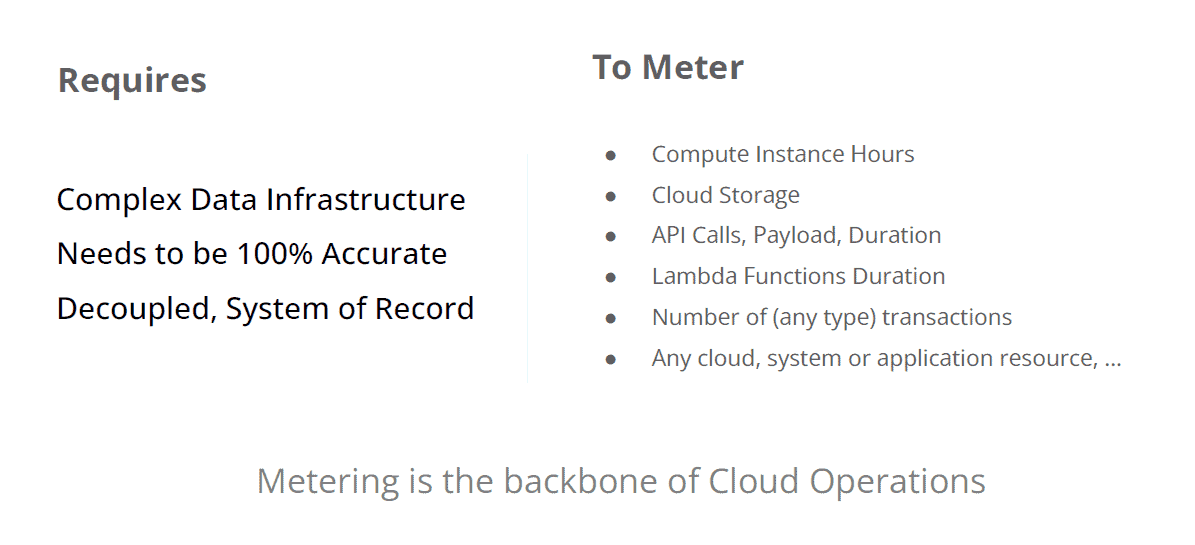
The challenge was and is mainly that you can’t do metering on an existing infrastructure. “Metering needs its own infrastructure,” Gupta points out. To explain that a little further, he makes a comparison between the (cloud) infrastructure that many organizations already use today and an infrastructure built for metering. A standard infrastructure is often about availability, so implicitly about uptime and downtime. To do metering accurately requires an infrastructure that focuses primarily on data accuracy. That includes building in a lot of redundancy so as not to lose data. If you lose data, you lose accuracy and UBP is doomed to fail. “Losing data is a mortal sin,” to use Gupta’s words. That’s also why AWS promises five nines availability, but thirteen nines durability.
AWS is a name that comes up often during the session with Gupta anyway. He has worked there himself and ended up, as he puts it, in a “perfect storm” in 2011 when he started there. At the time, AWS had just decided to shake up metering and completely rearchitect it. There he saw how to do it within the services AWS was providing. According to Gupta, this is one of the main reasons for the success of AWS, even though you never really hear about it.
Accurate, real-time and usage-based
In addition to redundancy, Amberflo’s Metering Cloud is also about things like deduplication and idempotency. With respect to metering, the key is that each record is really only processed once. Otherwise, the outcome at the end will not be correct. Small mistakes can lead to big differences down the road in terms of UBP. Idempotency means that the outcomes of a given action or operation are always the same, no matter how many times you perform it. With metering, that obviously has to be well managed because you want predictability.
At the end of the day, metering must be “accurate, real-time and usage-based,” Gupta argues. That also makes metering fundamentally different from other relatively modern developments around providing insight into what is happening within organizations’ infrastructure. Observability, logging and monitoring do not have to meet all three of these conditions to be useful. Therefore, you cannot deploy solutions that offer these features to collect data for UBP.
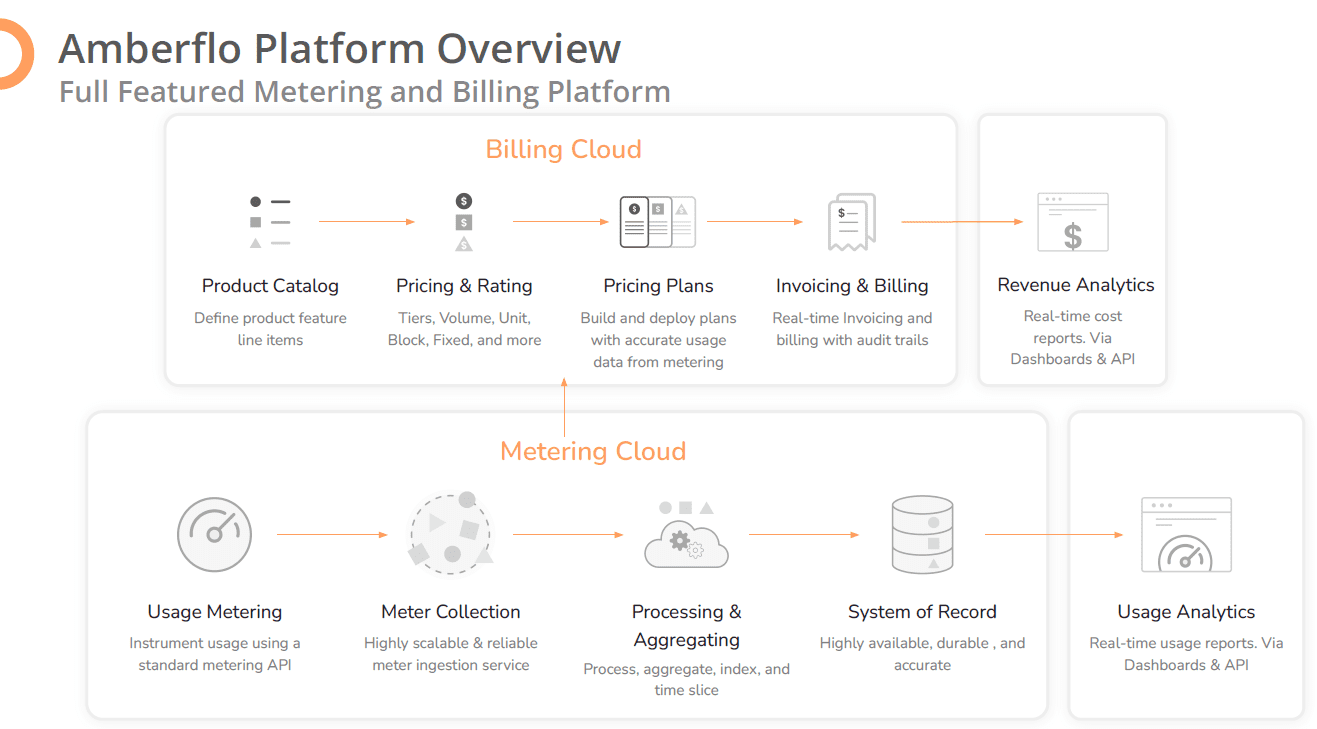
Metering predictability was often a major problem, or at least a limiting factor, as Gupta calls it. That, he says, is the main reason UBP has not yet become a success. To have a good and honest UBP story, forecasting is crucial. And you can’t do that well if your tools and technologies don’t work properly.
So Amberflo wants to offer a platform that can do all this well. In any case, Gupta makes a firm promise that they will never lose metering data. When it comes to forecasting, Amberflo also still has a challenge, though. “It’s still not easy to create accurate forecasting models because we don’t have enough similar customers yet,” he points out. That will have to grow as the startup gains more customers.
Modular solution, multiple end products
Amberflo’s platform is not the only one in the market that focuses on UBP. However, it has a fundamentally different approach, Gupta argues. First and foremost, Amberflo has a modular approach. That is, the metering component is not inextricably linked to the billing component. He says that is unique in this part of the market, in which Gupta says 40-50 vendors operate. He also shows a slide he uses in presentations to investors in which he plots competitors on a graph.
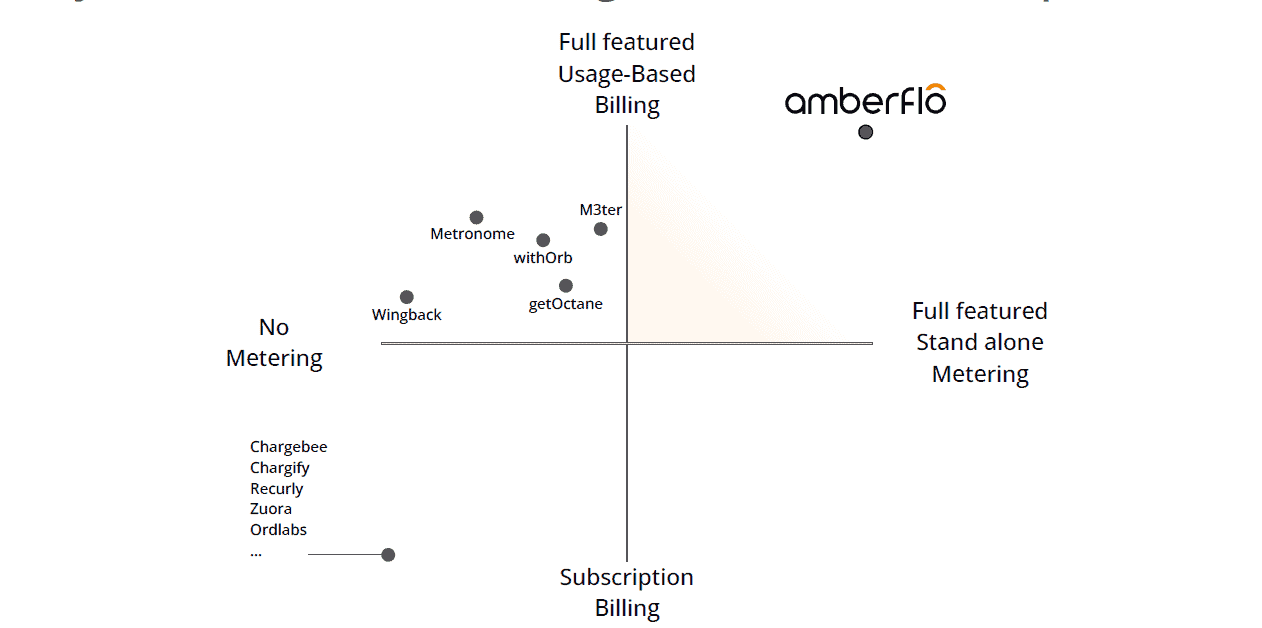
The above chart will no doubt paint an extremely rosy picture of the market, and how the different players compare. After all, it is meant to convince investors. However, it also indicates what Amberflo fundamentally wants to be: a platform that you can purchase however you want. If you only want to use the Metering Cloud, you can, but if you only want to use the Billing Cloud, you can do that too. Of course, both are also possible and will undoubtedly be Gupta’s preference. But as a new player, you also have to accept that this is not always realistic.
Gupta puts it this way during the session we had with him: “We are a general purpose metering vendor.” The foundation is metering, as we saw above. On top of this foundation, Amberflo offers products that companies can use. The first of these is UBP, but we can expect more toward the future. These could be solutions for specific industries, as well as around specific functionality.
Metering as an engine for innovation
You may be wondering at this point, as we did when listening to Gupta, why we can’t just stick with the subscription model after all. This may be less transparent, but it is otherwise pretty straightforward, as we stated in the beginning of this article. We all know the stories of companies being unpleasantly surprised at the end of the month by the unexpectedly high costs of using AWS, for example. Closer to home is the cost of phone subscriptions, where a flat rate without having to pay per MB, minute or text message is the preferred option for many people.
Still, Gupta maintains that if you use metering as a basis and thus give full transparency in terms of UBP, this will ultimately win out over subscriptions. In particular, he points to the innovation that UBP should enable. That would be held back by subscription models. As an example, he cites Dropbox, to which he pays a flat fee every month, but which hasn’t actually changed much in terms of the service it delivers over the past decade. There’s hardly any innovation anymore. It has all become too easy to just keep doing the same thing. This is not sustainable for the future, he argues. The fact that start-ups often work with UBP, also signals that the market is changing. This approach helps start-ups challenge the incumbent companies, and makes it possible to beat them.
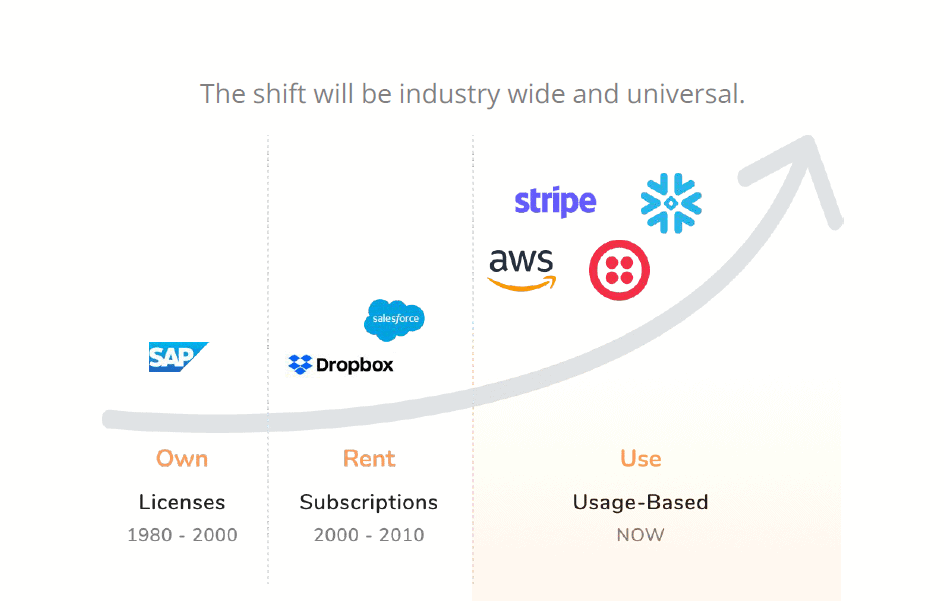
The expectation of Gupta and Amberflo is that this method of disruption will also cause existing companies to move more towards accurate metering-based UBP. All companies are in a transition phase, according to Gupta, only many do not yet realize it: “There is no such thing as a flat line, you go up or down. You have to innovate to go up.” In order to do the latter, you need to embrace UBP, is the idea.
Is the market ready for it?
Amberflo’s story in general makes sense to us. That is, the idea that you can only do UBP (and any other metering-driven business) if the metering foundation is solid, is a no-brainer. The big question is whether UBP is also always a win-win for both providers of a specific product or service and customers. Transparency alone won’t be enough. Organizations also need to be much more conscious about their cloud usage.
Amberflo especially wants to make cloud usage transparent. Other players in this market usually don’t do this. They ask for your login details, log in for you and handle everything else. This is far too reactive to deal consciously with cloud use. If you always have full visibility and full control over your metering and billing, you’re a lot more proactive. At least that’s the theory. Of course, the other side of the argument is that outsourcing everything to a third party is nice and easy. So it remains to be seen whether companies will make this shift to a more proactive approach to cloud use.
Ultimately, the success of Amberflo and the approach it advocates will not only depend on how good, accurate, real-time and usage-based the data in the Metering Cloud is. Getting the market to actually understand what it is that the company does and its benefits will be at least as big a task. The fact that Amberflo operates on a model where there is no contract to sign, no upfront costs and generally no commitments will certainly help. The free entry tier of one million events (after that you pay a price per million events) will also generate interest. At the end of the day, though, Amberflo is doing something new, or at least something in a different way. “If you do something new and disruptive, you will be misunderstood,” Gupta says. Amberflo will have to deal with that perception first.
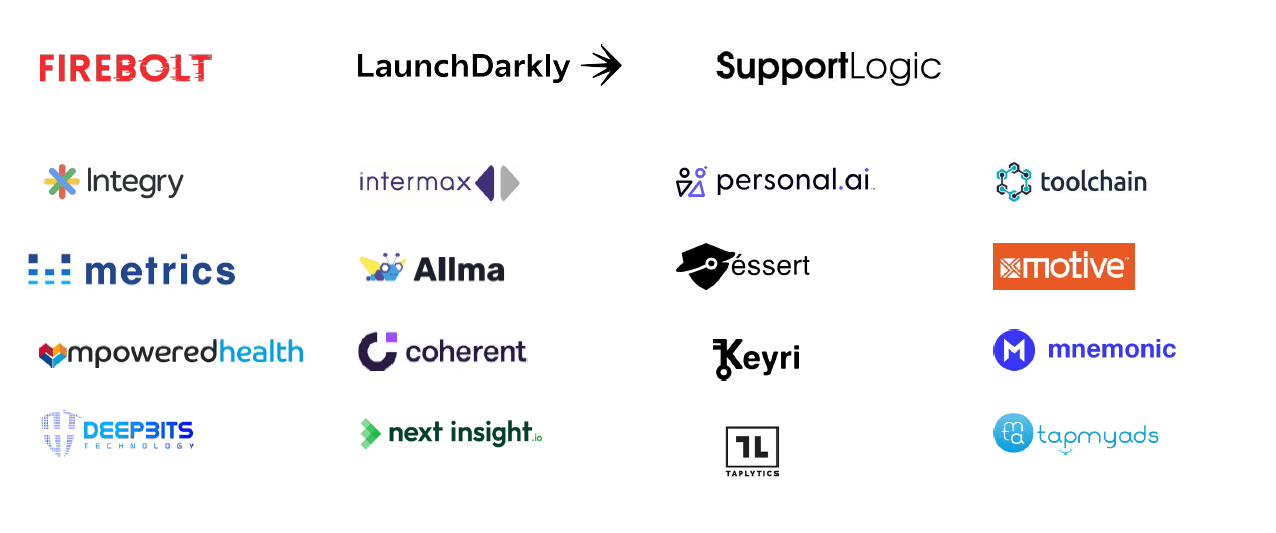
Read also: Cloud spending is skyrocketing: how to reduce costs?
